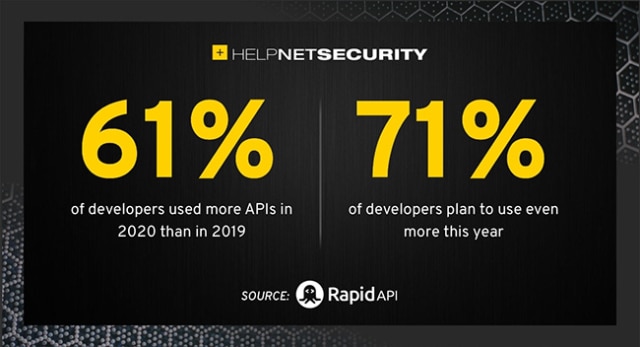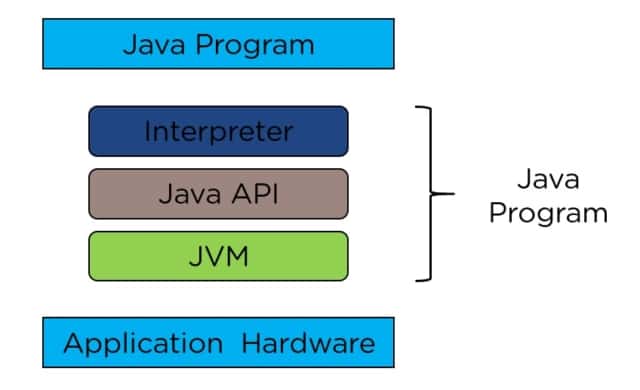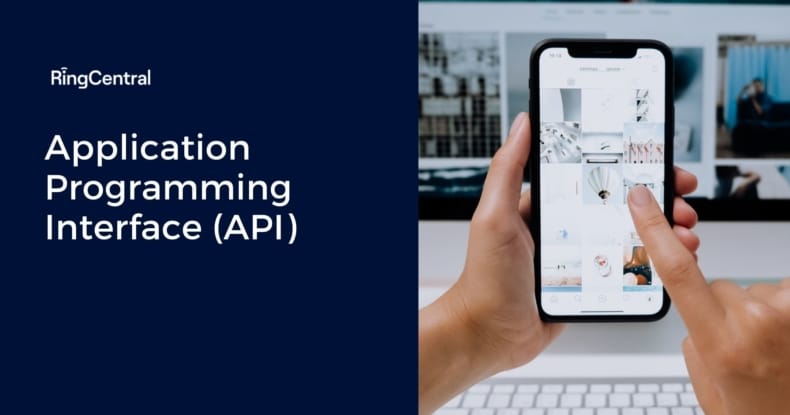In this article, we'll cover:
What is an API? The tech that allows your apps to talk to each other
It sometimes seems that no matter what you do in the world of business, but especially in ecommerce, that your world is full of jargon and acronyms. From martech to CRMs, it almost seems like an entirely new language, even more so if you’re new to the field.
One thing you will notice is the sheer amount of different apps and tools that you may use every day for everything from routine to complicated tasks. These apps can be used for messaging, for offering added functionality to your systems, or as automation for your social media platforms.

All these different apps may have different source code, from Java and PHP to Python. So, if these apps are written in different languages, how can they ever communicate with each other? The answer to that is something called an Application Programming Interface (API). But what exactly is an API? How do they work and what benefits do they offer us?
What is an API?
Application Programming Interfaces are best described as a form of software intermediary that lets two different applications talk to each other. Think of an API as the software equivalent of a human translator if you were visiting a foreign country.
You may not realise it, but you’ll use APIs multiple times in any day; when you check the news on your Android or iOS smartphone, send a message via Facebook, or take many other actions.
The great thing about APIs, other than being the software equivalent of a Babelfish, is that they are extremely versatile and can work with your hardware, any web-based systems, operating systems, or database systems. They help software development teams work more efficiently as they let them use existing code and just add the new and relevant parts for any process they’re building.
Think of APIs as being a service interface while a Software Development Kit (SDK) is the different pieces of code (or tools or components) that have been created for specific purposes. Companies like GitHub bring together millions of developers using open source APIs to build software.
How APIs Work

An API works by using the rules that allow computers, smartphones, applications, or other tools and devices to talk to each other. Your API is the link or middleman between the two different entities.
To give an example, if you wanted to access your Instagram account from your phone, the Instagram app would contact an API which would retrieve your log-in details. Instagram would access and verify your info from its servers and return data to your mobile device app.
Web APIs are the most common, but are used purely for web apps. There are other APIs for any system or machine that needs to communicate and interact with others. To make things easier for developers, RingCentral offers open source APIs with tutorials and easy API management so that you can build and create your own apps and integrations.
Benefits of APIs

A) To customers
In this case, customers refers to anyone who is using an API in their processes, as well as the end consumers. There are a number of primary benefits:
- Increased productivity. If you’re using APIs within your organisation, then it helps your teams to streamline how they work and the overall operations of the business. They can also boost collaboration and foster transparency across your business operations. With RingCentral’s open API, this enables integrations to be simple processes.
- Better UX. Any online business wants their user’s experience to be as smooth and optimised as possible. APIs allow you to integrate tools and widen their functionality. For example, many food ordering apps will use APIs to combine the function of choosing your meal with a maps app that lets you track where the delivery driver is. APIs allow you to integrate
- Innovation. APIs allow developers to use old code or components of previous tools and apps to create new apps and solutions. This saves a lot of time while helping to innovate. Many SaaS providers, such as RingCentral, offer cloud-based open API architecture that allows your developers to pick and choose the components they want and need.
B) To service providers
You can easily see why APIs are a good thing, and that you use them everyday, but why should you develop one and what benefits would that offer you as a provider?
- Money. The most obvious benefit is that a good API can make you money. The primary reason tech giants such as Facebook and Google not only develop APIs but also make them public is that they provide a lucrative revenue stream. In fact, 35% of leading tech companies generate more than 25% of their revenues because of their public APIs.
- Reach. If your organisation is developing good APIs and making them available to other companies, you will expand your reach, as a whole new network of customers adopt your API thanks to its reliability and functionality. This then creates a cycle where more people will use your primary platform and you’ll find new opportunities in the market.
- More innovation. Innovation can be a two-way street. It’s not only about other organisations using APIs you develop, but the innovations they develop can then bounce back to your own DevOps teams so that they can make improvements and innovations to your own systems and processes.
What are the types of API?

A) By release policy
1. Public: Public APIs (also called Open APIs) are APIs that come with few restrictions (if any) and can be used by developers or other relevant users. In some cases, the user may have to register, or they may need to use an API key or OAuth. In other cases, they can be completely open to all. They mainly focus on external users for accessing data and metadata or services.
2. Partner: Partner APIs are ones used by and/or shared between your strategic business partners. They’re not public and can be used to communicate with systems outside your company. With a partner API, there’s an onboarding process and a specific validation workflow so that users can get access to them.
3. Private: Private APIs (or internal APIs) are only used within an organisation, and cannot be seen or accessed by external users. Your internal DevOps teams will use these to boost productivity or to improve existing systems. They’re controlled by good governance that authenticates users and lets them access the correct APIs.
4. Composite: This type of API brings together different data or service APIs. Developers can use them to access several tools or endpoints with one process. If you’re making a transition to a unified communications system such as RingCentral, composite APIs can simplify the transition.
B) By use cases
1. Web API: The most common type of API, Web APIs allow for the exchange of readable data and functionality between web-based systems. They mainly offer communications between web apps and servers using HTTP. Web APIs allow developers to expand the functionality of their apps (such as the earlier example of adding tracking to a delivery app).
2. Database API: This type of API allows for communication between your apps and database management systems. Your developers need to work with databases to access data and other tasks. With many organisations having multiple cloud-based databases, good API integrations enable you to access them via one app.
3. Operating system API: These APIs define the rules of how your apps utilise operating systems’ resources and services. Each OS has its own specific set of APIs. For example, Windows has Windows API and Linux has Linux API (which in turn offers kernel–user space API and kernel internal API).
4. Remote API: When your software program needs to access external resources, a remote API comes into play. As the communication is usually done via the internet, most remote APIs are written to web standards. A good example of a remote API would be Java Database Connectivity API.
Modern API architecture

Remote Procedure Call (RPC)
RPC is the protocol that defines how different applications (especially client-server based ones) interact with each other. A program (the client) requests functionality or data from another program (the server), and the RPC allows for the server to send the response that’s required.
Service Object Access Protocol (SOAP)
Developed by Microsoft, SOAP is a protocol for exchanging information in a decentralised environment. It will contain all the syntax rules for requests and responses. If an API complies with SOAP it will use XMLmessaging via HTTP or SMTP (if transferring mail). Enterprise level web-based programs will usually use SOAP to ensure high security, and SOAP APIs are usually used for payment gateways, ID authentication, and CRM processes.
Representational State Transfer (REST)
REST, as a term, was coined by Roy Fielding in 2000. While SOAP is a protocol, REST API is an architectural style that lets developers build things like web services using HTTP.
The best example of REST style is the world wide web. While SOAP involves complex coding, REST is easier to use as it makes data available to users as resources. Restful APIs also allow different formats of messaging, including HTML, plain text, YAML, XML, and JSON.
Service Oriented Architecture (SOA)
SOA is often used in software design when some services are provided via communications protocols over a network. SOA supports service orientation, and those services can provide a specific functionality such as retrieving a customer’s credit card details. SOA is also intended to be independent of other technologies as well as vendors and products.
gRPC
This is an open-source API framework that can also come under RPC. It’s relatively new, having been released by Google in 2015. With gRPC, the client can access the server as if it were a local object, simplifying the creation of distributed apps and services. gRPC uses protocol buffers in place of JSON or XML as the IDL (Interface Definition Language) for serialising any structured data.
GraphQL
As mobile technology advanced, developers needed ways to develop quicker features and to allow for more efficient loading of data. Facebook originally developed GraphQL for internal use, but later released it and many organisations, including Shopify and Yelp, now use it to build APIs.
In essence, it’s an API query language that allows the client to define the data it needs and simplifies how you aggregate data, so the developer can use one API call to request all data needed.
Examples of APIs

One of the world’s tech giants, Google, uses APIs across their services. They allow for efficient communication and integration between Google services and other services.
Those services include their search engine, GMail, Google Translate, Google Docs, and Google Maps. Third-party apps can use these APIs to improve the functionality of their own services (such as Tweeted Trips which uses Google Maps to let Twitter users map a journey).

As the world’s largest social media platform, Facebook relies on APIs to allow third party developers to connect with them. The use of APIs with Facebook includes games, streaming of live events, and apps, as well as business-related functions such as running automated marketing campaigns.
Some of the most common APIs on Facebook include Facebook Live, Facebook Pages, and Facebook Marketing.

Twitter has in excess of 300 million active monthly users. With so many conversations going on, the platform depends on a number of APIs to make them efficient.
Twitter API lets users analyse and learn from Tweets, while the Twitter for Websites API allows you to link Twitter conversations directly to your website.
Java

If you’re programming in Javascript, you need the Java APIs that come with the development environment (JDK). Java APIs provide developers with an interface between different applications so that they can build communication links.
The most common Java APIs include interfaces, classes, and user interfaces that allow developers to integrate different websites and apps and provide real-time info.
Conclusion

Think of APIs as the roads that connect different towns and cities, and you get some idea of how important they are in the digital era.
Or as the postman bringing you important documents; in this case, API documentation. They’re an essential part of virtually every app, website, web service, or digital product.
RingCentral offers much more than a unified communications platform. Our open API platform is proven to help boost sales and productivity by offering you easy integration between your different apps and systems.
Originally published Oct 29, 2021

